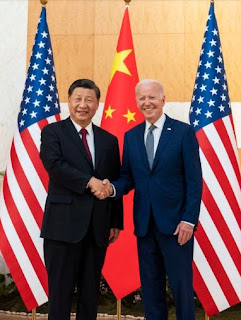US Government Weighs New Export Controls on AI Chips
The US government is considering new export controls on artificial intelligence (AI) chips that could limit the flow of these chips to China. The move is part of a broader effort by the Biden administration to counter China's growing technological dominance.
The proposed controls would target chips that have the computing power to enable certain AI applications, such as facial recognition and natural language processing. The controls would not affect all AI chips, but only those that meet certain technical thresholds.
The Biden administration is concerned that China could use these chips to develop its own AI capabilities, which could pose a national security threat to the United States. The new controls would be designed to prevent China from obtaining the computing power it needs to develop these capabilities.
The proposed controls are still under consideration, and it is not clear when they would be implemented. However, the move is a sign of the Biden administration's growing focus on countering China's technological advances.
The new controls would be implemented through the Export Administration Regulations (EAR), which are the primary set of US export controls. The EAR restrict the export of certain goods and technologies that could have a military or strategic application.
The proposed controls would be similar to the export controls that were imposed on China in October 2021. Those controls restricted the export of chips that could be used to develop AI applications that are similar to ChatGPT.
The new controls would be more stringent than the October 2021 controls. They would target a wider range of chips and would be more difficult for China to circumvent.
The proposed controls have been met with mixed reactions from the tech industry. Some companies have expressed concerns that the controls could stifle innovation. However, other companies have said that the controls are necessary to protect national security.
The Biden administration is expected to make a decision on the proposed controls in the coming months.
- The potential for the new controls to be circumvented. The Biden administration is aware that China may attempt to circumvent the new controls. The administration is working with allies to develop a coordinated approach to enforcing the controls, and is also working to develop new technologies that could make it more difficult for China to circumvent the controls.
- The potential for the new controls to escalate tensions between the United States and China. The new controls could further escalate tensions between the United States and China. China has already accused the United States of using export controls to stifle its technological development. The new controls could lead to retaliatory measures from China, which could further strain relations between the two countries.











